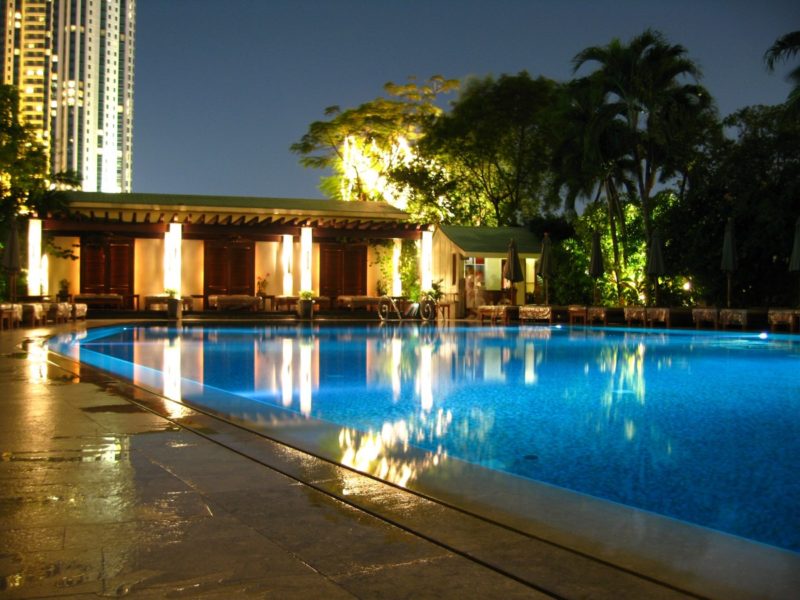Are you wondering how big of a pool heater do I need? The answer is that it should not be too big but should leave you satisfied. Choose the one rated higher than the desired temperature increase and exact pool surface area when choosing a pool heater.
Also, keep in mind that there is not what you call oversizing a pool heater. It’s quicker to heat the pool water if the pool heater’s BTU output is more significant.
You’ll be glad for opting a bigger pool heater so let us discuss more on this below and keep reading! In this article, you will know
How Big Of A Pool Heater Do You Need?
A swimming pool is helpful for the family to have fun and excitement of being together. But then, there are always limits on the hours you should use the pool, considering day and night cycles and climate. And to jump in a collection with freezing and cold water doesn’t sound much fun, and the family members will have differing preferences considering pool water temperatures.
Some would feel 75 degrees Fahrenheit, a perfect and acceptable water temperature for an early evening swim. Others would find it difficult to enjoy an 80-degree Fahrenheit pool although the sun shines right above them.
Pool heating demands energy, but heat maintenance is another issue with difficulties. But the pool is essentially a vast water body that sits out in the open and loses both mass and heat over time because of evaporation. When the pool heater reaches a suitable water temperature for swimming, it must maintain the temperature brought by the heat loss on the water surface.
A pool with a simple design that has to be used for a pool party requires a heater that heats it for 48 or 72 hours. But when it comes to a Jacuzzi or hot water spa, it’s not possible to give the heater three days to get the water warm. Indeed, sizing the heater is challenging, and it is ok to have a bit oversized pool heater. Many pool experts suggest oversizing the pool heater in a small margin that compensates for upgrades and unexpected weather changes.
A small pool heater consumes less electric or gas energy to work but it requires working longer. Bigger heat can cost you upfront, but it can complete the task in less time. It may consume energy at a higher rate, but the total energy expenditure is not that different than a small heater, as this is true if both are rated for the same actual efficiency.
Sizing Up A Pool Heater
So, how big of a pool heater do I need? Below are the steps on how to size up a pool heater:
#1. Time and water volume
This is one popular method that measures the size of a pool heater. It considers the pool volume in gallons and factors in the loss from a surface due to evaporation. It may be helpful to read about managing swimming pool temperature for energy efficiency.
#2. Temperature rise and surface area
Calculate first the surface area in a pool by square feet but know the various formulas for the different pool shapes.
Oval-shaped pool
This method applies to any shape of the elliptical pool. Call the smaller radius “A” and the bigger radius “B”. The oval pool area is A x B x 3:14 or A x B x π. For example, the oval pool is 20-feet in length and 10-feet in width. The measurement is 5-feet in the smaller radius and 10 feet in the larger radius, and the surface area is 157 square feet from 5 times ten times 3.14.
Circular-shaped pool
The round pool area is πr2 with π as constant with 3.14 values while “r” stands for the pool radius, half of the diameter. A circular pool with a 10-feet diameter has a 5-feet radius, meaning to say, the surface area is 78.5 square feet from the computation of 3.14 x 5 feet x 5 feet.
Kidney-shaped pool
Take two points furthest away from the collection as you measure the distance between them. Look for the width in the slight kidney bulge and look for another in the enormous kidney bulge. Get the pool area with the formula, (A+B) x L x 0.45, with A and B as two different widths in the more prominent and smaller bulges. Moreover, the L is regarded as the length of the two furthest pool points.
Rectangular pool
Multiply the width by the length to arrive at 112 square feet, as this is the answer from multiplying 14-inches by 8-inches which will also guide you in how big of a pool heater you need.
The Significance Of Solar Blankets For The Pool
The heat loss occurs because of evaporation, particularly with the low humidity of air and an outdoor pool. The loss due to evaporation can occur during the day and the night. But then, it is maximized with the highest pool water temperature. There are, however, forms of heat loss on the surface of the pool, like convection and radiation. But then, they add up to twenty to thirty percent of heat loss. The solar pool blanket can prevent heat loss due to evaporation and suppress heat loss through convection. You not only retain the pool heater for more extended times, but you avoid the loss of essential pool chemicals because of convection or evaporation.
It’s A Wrap!
Now you learn how big of a pool heater do I need as it must never be too big but must always leave you satisfied. Permanently settle with one rated higher than the desired temperature increase and exact pool surface area. Consider how to size up a pool heater considering the time and water volume and the temperature rise and surface area. Don’t hesitate to know these things too; read about where to buy a pool heater and why does my pool heater keep shutting off.

